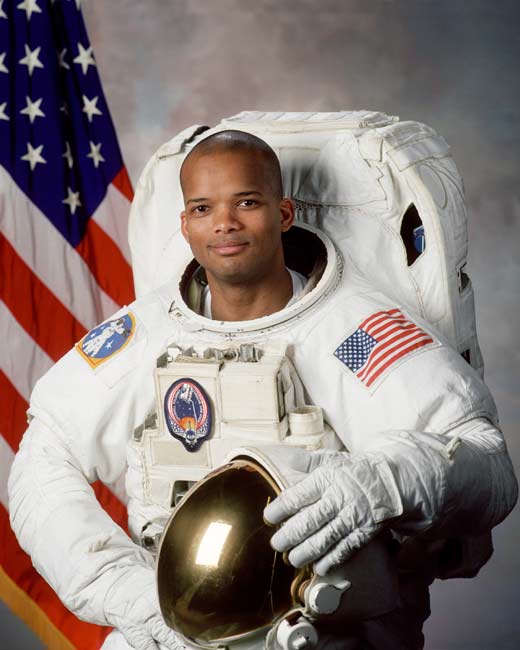Cut in Astronaut's Glove Leads to Changes at NASA

NASA is incorporating changes to its spacewalk procedures after a small cut to the glove of an astronaut was discovered after an International Space Station (ISS) assembly mission last December.
Astronaut Robert “Beamer” Curbeam incurred the three-quarter inch (2 cm) cut to the protective outer fabric layer of his right glove sometime during the transfer of three bundles of external shielding from the shuttle Discovery to the ISS on Dec. 16, said NASA spokeswoman Brandi Dean.
The nick, which did not pose any risk to Curbeam, was not discovered until inspections of the suit and other equipment in February.
Vectran
The bulky gloves worn by astronauts during spacewalks, or extravehicular activities (EVAs), consist of five layers. An outermost lamination layer covers part of the glove and is used to enhance grip and provide thermal protection; this layer sloughs off fairly regularly, Dean said.
Beneath the lamination layer is a strong “Vectran” fiber covering that protects against abrasions and cuts, followed by a resistant nylon layer, an airtight rubber “bladder,” and a final inner layer that keeps the bladder off the astronauts’ skin.
The cut in Curbeam’s glove only penetrated the Vectran layer. “It’s a real strong material,” Dean told SPACE.com. “You probably couldn’t cut through it with most scissors.”
Breaking space news, the latest updates on rocket launches, skywatching events and more!
Vectran is a synthetic fiber made from liquid crystal polymers. It has been compared to Kevlar, the material used in making bulletproof vests. The cushioning airbags of the Mars Pathfinder mission were made of Vectran.
Not life-threatening
How the cut was made is still unclear. ISS Deputy Manager Kirk Shireman said the agency has reviewed video taken by cameras atop the astronauts’ helmets and aboard the ISS to try and pinpoint the exact time the cut was incurred but have so far been unsuccessful.
“The cut was kind of inside of the thumb,” Shireman said. “It’s not an obvious place for even Curbeam to see, so it’s certainly not obvious from a camera perspective.”
“We went through hours and hours of videotape and we narrowed it down to, I think, a three-hour period in which the glove could have been cut,” he added. “We can’t narrow it down to one specific place.”
While the cut was not life-threatening, the agency is not taking any chances. NASA is “going to start asking the spacewalkers to do regular visual checks of their gloves and look for holes,” Dean said in a telephone interview, “and if they see something they’ll call off the spacewalk and have them come back so they can be sure it’s not cut through the bladder.”
Already been prepped
The crew of the next space shuttle mission, STS-118, has already been trained with the new procedures, said Expedition 15 lead spacewalk officer Daryl Schuck. “They’ve been briefed on how we’re going to incorporate that into the real-time plan,” Schuck said.
NASA has also passed along information pertaining to the accident to the Russian Space Agency, whose cosmonauts are scheduled to perform a spacewalk next week.
“Whatever can cut a U.S. glove can most likely cut a Russian glove as well,” Shireman said.
The Russians are “very cooperative in their listening obviously because their interest, just like us, is in the safety of their crew,” Schuck said.
- Complete Space Shuttle Mission Coverage
- Space Shuttle Atlantis Returns to Launch Pad After Repairs
- The Great Space Quiz: Space Shuttle Countdown
Ker Than is a science writer and children's book author who joined Space.com as a Staff Writer from 2005 to 2007. Ker covered astronomy and human spaceflight while at Space.com, including space shuttle launches, and has authored three science books for kids about earthquakes, stars and black holes. Ker's work has also appeared in National Geographic, Nature News, New Scientist and Sky & Telescope, among others. He earned a bachelor's degree in biology from UC Irvine and a master's degree in science journalism from New York University. Ker is currently the Director of Science Communications at Stanford University.
